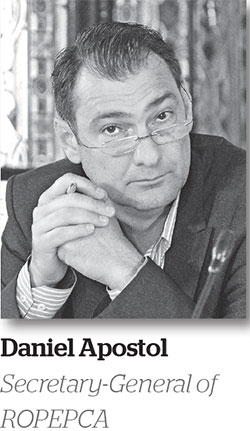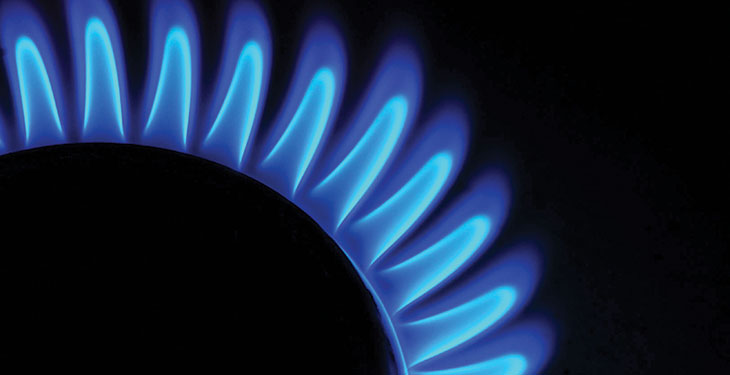
Government Ordinance no. 64/2016 requires the trading of a certain quantity of gas on centralized markets and, at the same time, announces that it would remove, as of 1 April 2017, the issue of interruptible consumers, thus removing the threat of infringement from the European Commission. At the same time, the Ministry of Energy and the ANRE managed to draft and complete a Gas Network Code, ensuring a balancing market and the creation of the spot market in the near future. These are natural steps towards the full liberalization of the market. According to their own announcements, both the Ministry of Energy and the ANRE solved, by their decisions, the access of Romanian household consumers to a competitive market. A simple question still remains: when and with what consequences (either positive or negative, that is to be seen) will household consumers be able to access gas on a deregulated market?
Liberalization from April 1st
The President of ANRE, Niculae Havrileț, recently said that 1 April 2017 is the date when the household consumer gas market will be fully liberalized. If so, we will make steps towards what is already provided in the legislation, namely that the liberalization we committed to in our relation with the foreign partners (the European Commission and the IMF) should take place only in 2021. Also recently, the secretary of state within the Ministry of Energy, Corina Popescu, emphasized that the regulated market will not see the current tariffs in the supply segment go away, which relaunches the idea of full liberalization to debate. Will it or will it not take place, as announced?
The great argument supporting the completion of the process of full transition to a free market is, perhaps surprisingly for laymen, the exact argument for which the regulated tariff was maintained: the price. More specifically, the need for a low price providing an “envelope” of social protection to disadvantaged household consumers, with reduced purchasing power. Not many years ago, the price of gas purchased from the foreign market exceeded the price that a Romanian consumer could afford to pay: as on the international market gas prices are related to the evolution of oil prices, when the latter reached the peak values of more than 100 USD/bbl, gas prices went up.
Good chance
Today, the oil barrel is shyly swinging in the range of 40-50 USD, and the price of imported gas dropped along the oil price. A bad news for oil and as producers, it could become a good news for household consumers in Romania, only provided that the authorities pay their share in the good news. Let me explain: the price of gas purchased from the foreign market is now smaller than the regulated price, therefore, in theory, Romanian household consumers could pay less for this source of energy. But from theory to practice, we have the ANRE. The small price at international level is the exact big opportunity for the liberalization to be completed now, when foreign circumstances are favourable for the poor pockets of the domestic consumer.
The convergence of the import price to the domestic price can be best achieved for the consumer right now. The gas consumption rises dramatically in winter, and statistics show that we are importing even more than before. Romania imports gas and at the same time stores gas, at about the level of 2015, ensuring domestic peace of mind when it comes to gas supply in the cold season. Moreover, imports are made at much more favourable prices than in the past, as the domestic regulated basket favors imports, unfortunately to the detriment of domestic producers, forced to sell to the population at the higher regulated price. Even the president of ANRE, Niculae Havrileț, announced that Romania imports approximately one quarter of the daily gas consumption, as the price is lower: “in what regards gas, the Authority set a minimum threshold of 1.7 billion cubic meters (bcm) for storage. Romgaz storage reaches 2.4 bcm, approximately the same quantity as last year. This year, on account of global low prices, at least below the value of the domestic gas stored, these major import contracts have been signed.
In the first 10 days of November, 40 million cubic meters were consumed from storage, while, for example, in 2012, in November, the consumption from storage reached 340 million. We foresee that this month the consumption from storage should not exceed 100 million cubic meters, on account of imports, representing now approximately 25% of the daily consumption. Basically, from 44 million cubic meters which is the daily consumption in this period, 10 million, on average, come from import. There are suppliers who use this source, given its competitive price, if measured against the reference price”, said the President of ANRE during a specialty conference.
Also according to him, there is an option that Romania imports a high volume this month, reaching approximately 40% of the national gas consumption, in particular as the price of gas on the international markets will drop even by 20 lei/MWh below the price of gas from domestic production from storage. The price paid by the population has been frozen by Government Resolution to be 60 lei/MWh until 1 April 2017, but “as of 1 April we will remove the system in which prices were set by Government Resolution, and ANRE will establish a price building methodology for domestic consumers, given the liberalization.
This means that the consumer basket will include imported gas, gas from the current domestic production, as well as gas from storage, and this basket will be managed by ANRE following a methodology obliging suppliers of the household market to ensure the best balance, namely to maintain the prices as low as possible. But, as some energy market analysts were wondering, does this mean that the gas market becomes truly liberalized as of 1 April, or will it be nothing else but April Fool’s Day?
—————————————-
The full version of this article can be read in printed edition of energynomics.ro Magazine, issued in December 2016.
In order to receive the next issue (March 2017) of energynomics.ro Magazine, we encourage you to write us at office [at] energynomics.ro to include you in our distribution list.
